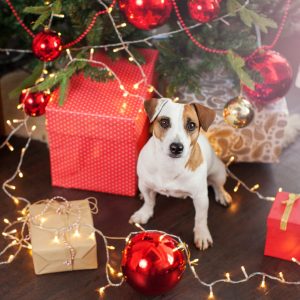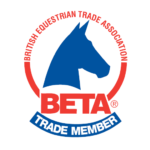The holiday season is a time of joy and we can get caught up in the festivities. However Christmas season can challenge our furry friends in unique ways. This article will help you understand triggers and shares tips for pet safety during the holidays.
Festivities and Food
One of the most significant holiday pet safety concerns is the tempting array of foods on the table. While these dishes may be delicious for humans, they can pose serious risks to your pets. Chocolate, grapes, raisins, onions, and certain artificial sweeteners like xylitol can be toxic to dogs and cats. To ensure your pet’s safety, keep holiday treats out of their reach and educate your guests about what not to feed them. In the midst of the festivities, it’s easy for well-meaning family and friends to share a tidbit, so being proactive is crucial.
Safety Around Fireworks
New Year’s Eve celebrations often include fireworks and other loud, sudden noises that can be extremely distressing for pets. The sound of fireworks can trigger anxiety and fear in dogs and cats, causing them to behave unpredictably. However, there are some tips for and strategies that might be helpful and make your pet safe during these challenging times.
Desensitisation and Training
Desensitization is a gradual process of exposing your pet to fireworks or loud noises in a controlled and comfortable environment. The idea is to help your pet build tolerance over time. Here’s how you can do it:
1. Start Early: Begin desensitization training well in advance of the holiday season. This allows your pet to become accustomed to the sounds gradually.
2. Use Recordings: Play recorded fireworks sounds at a very low volume initially while engaging in enjoyable activities with your pet. Gradually increase the volume over multiple sessions.
3. Reward Calm Behavior: Whenever your pet remains calm in the presence of the sounds, reward them with treats, praise, or playtime. This positive reinforcement helps create positive associations with the noises.
4. Consult a Professional: If your pet’s anxiety is severe, consider consulting a professional animal behaviorist or trainer for guidance.
Safe Haven
If desensitization isn’t an option or your pet remains anxious despite training, it’s essential to create a safe haven during the holiday celebrations. Here’s some tips for creating a safe space for your pet during the holidays:
- Designate a Quiet Space: Choose a quiet room or area in your home where your pet can retreat during the festivities. This space should be cozy and filled with familiar items like their bed, toys, and water.
- White Noise or Soothing Music: Play white noise, classical music, or specially designed pet-calming music to mask the sound of fireworks.
- Calming Supplements and Thunder Shirts: Some pets benefit from calming supplements, such as pheromone diffusers or natural remedies. Additionally, consider using a “Thunder Shirt” – a snug-fitting garment that provides comfort and reduces anxiety.
Holiday Decorations and Plants
The allure of twinkling lights, tinsel, and ornaments can be irresistible to pets. Cats may find ornaments particularly fascinating, while dogs might chew on cords, which can result in electrical shocks. Some plants commonly used for decorations, such as poinsettias, mistletoe, and holly, are toxic to pets. To mitigate these risks, secure decorations out of your pet’s reach and consider using pet-friendly alternatives. Tinsel and ribbon, for example, can be swapped with pet-safe options like paper or fabric decorations.
Practical Steps for Holiday Pet Safety
Pet-Friendly Feasts
Include your pets in the holiday celebration by preparing a special pet-friendly meal. Cooked, plain turkey or chicken without seasoning, and small amounts of plain, cooked vegetables like green beans, carrots, or peas can make a tasty and safe treat for your pet. Just be cautious with portion sizes to avoid upsetting their stomachs.
Pet-Proof Your Home
Before the festivities begin, survey your home for potential hazards. Secure decorations, cords, and plants out of reach, and use baby gates or closed doors to keep pets away from rooms with potential dangers. You may also want to invest in bitter sprays or pet deterrents to discourage chewing.
Identification and Microchipping
In case your pet does manage to escape or get lost during the holiday chaos, ensure they have proper identification. Make sure their collar and tags are up to date, and consider microchipping for an extra layer of protection.
Holiday pet safety is all about being proactive and considering your furry friends as you celebrate. By taking steps to pet-proof your home, educate your guests, and provide alternatives to harmful traditions, you can ensure that your pets enjoy the holidays just as much as you do. After all, their well-being and safety are at the heart of any joyous celebration. So, let’s make this holiday season a time of joy and safety for all, including our beloved pets.



